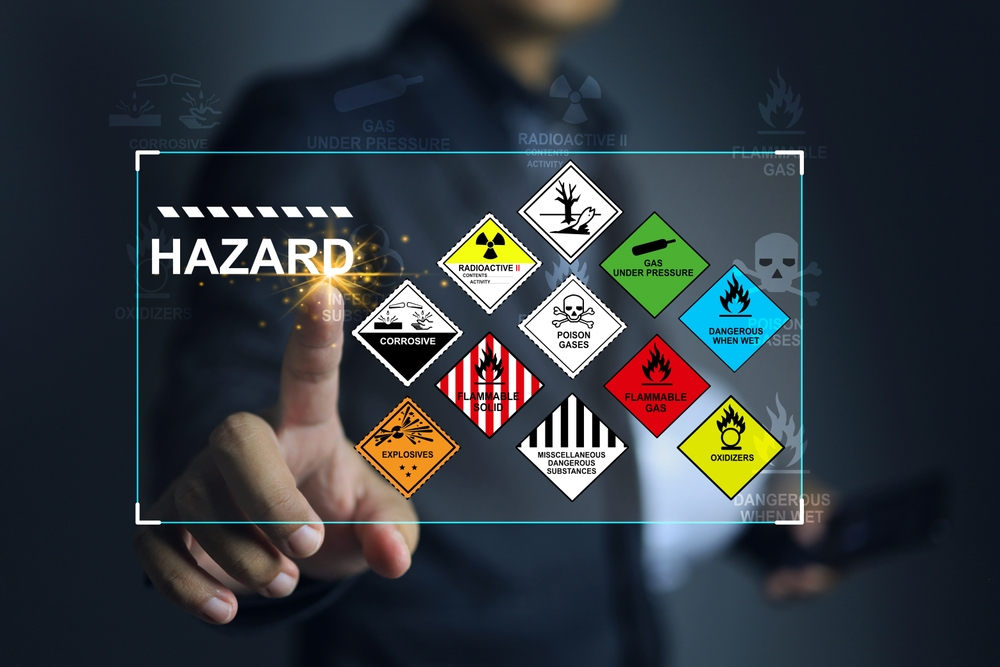Facts About Roar Solutions Uncovered
Wiki Article
Roar Solutions Fundamentals Explained
Table of ContentsThe Definitive Guide to Roar SolutionsWhat Does Roar Solutions Do?6 Simple Techniques For Roar Solutions
In such an atmosphere a fire or surge is feasible when 3 basic conditions are satisfied. This is usually described as the "hazardous location" or "burning" triangle. In order to safeguard setups from a prospective surge a method of evaluating and categorizing a potentially hazardous area is needed. The function of this is to make sure the right option and setup of tools to ultimately stop a surge and to ensure safety and security of life.
(https://www.artstation.com/roarsolutions6/profile)
No tools needs to be installed where the surface area temperature level of the devices is more than the ignition temperature level of the given danger. Below are some typical dirt hazardous and their minimum ignition temperature. Coal Dust 380C 225C Polythene 420C (thaws) Methyl Cellulose 420C 320C Starch 460C 435C Flour 490C 340C Sugar 490C 460C Grain Dirt 510C 300C Phenolic Resin 530C > 450C Aluminium 590C > 450C PVC 700C > 450C Residue 810C 570C The likelihood of the danger being present in a concentration high sufficient to trigger an ignition will certainly differ from location to place.
Unsafe location electrical equipment possibly designed for usage in higher ambient temperatures. Field Repair By Authorised Personnel: Difficult testing may not be required nevertheless particular treatments might need to be followed in order for the tools to keep its third party ranking. Each piece of equipment with a harmful ranking ought to be reviewed individually.
How Roar Solutions can Save You Time, Stress, and Money.
The devices register is a comprehensive database of devices documents that includes a minimum collection of areas to recognize each thing's place, technological parameters, Ex classification, age, and ecological information. This info is vital for tracking and handling the devices properly within dangerous areas. On the other hand, for routine or RBI tasting assessments, the quality will certainly be a mix of Thorough and Close assessments. The proportion of Comprehensive to Shut inspections will be determined by the Equipment Danger, which is evaluated based on ignition threat (the possibility of a source of ignition versus the probability of a flammable ambience )and the dangerous location category( Area 0, 1, or 2). This variation will certainly likewise affect the resourcing needs for work preparation. As soon as Lots are specified, you can develop sampling plans based on the example size of each Great deal, which refers to the number of arbitrary tools things to be examined. To figure out the needed sample dimension, two elements need to be reviewed: the dimension of the Lot and the classification of examination, which shows the level of initiative that should be used( decreased, typical, or boosted )to the evaluation of the Great deal. By incorporating the group of evaluation with the Great deal dimension, you can after that develop the ideal being rejected criteria for a sample, meaning the allowable variety of malfunctioning things located within that sample. For even more information on this process, please describe the Power Institute Standards. The IEC 60079 standard advises that the optimum interval in between inspections need to not exceed three years. EEHA evaluations will likewise be conducted beyond RBI campaigns as component of set up upkeep and equipment overhauls or fixings. These examinations can be attributed toward the RBI sample sizes within the influenced Lots. EEHA assessments are carried out to recognize faults in electric devices. A weighted racking up system is crucial, as a single piece of equipment may have numerous faults, each with varying degrees of ignition threat. If the consolidated rating of both inspections is less than two times the fault score, the Lot is deemed appropriate. If the Whole lot is still taken into consideration undesirable, it needs to go through a complete assessment or justification, which may trigger stricter assessment procedures. Accepted Whole lot: The root causes of any kind of mistakes are identified. If a common failing setting is found, extra tools may require examination and repair service. Mistakes are identified by intensity( Safety, Stability, Home cleaning ), making sure that urgent problems are assessed and resolved without delay to reduce any impact on safety and security or procedures. The EEHA data source need to track and tape-record the lifecycle of mistakes along with the corrective actions taken. Applying a durable Risk-Based Examination( RBI )strategy is important for ensuring conformity and security in taking care of Electric Tools in Hazardous Locations( EEHA) (hazardous area course). Automated Fault Rating and Lifecycle Administration: Effortlessly handle mistakes and track their lifecycle to enhance evaluation precision. The introduction of this support for risk-based assessment read the full info here even more reinforces Inspectivity's setting as a best-in-class solution for regulative compliance, in addition to for any kind of asset-centric examination use situation. If you want finding out extra, we welcome you to ask for a presentation and discover how our remedy can change your EEHA administration procedures.
The Greatest Guide To Roar Solutions

In terms of explosive risk, a hazardous location is a setting in which an explosive environment is present (or may be expected to be existing) in amounts that need unique preventative measures for the building, installation and use devices. high voltage courses. In this article we discover the difficulties dealt with in the work environment, the risk control procedures, and the needed competencies to work safely
These compounds can, in particular problems, create explosive environments and these can have significant and awful repercussions. Many of us are acquainted with the fire triangular remove any one of the 3 components and the fire can not occur, but what does this mean in the context of harmful areas?
In many instances, we can do little regarding the levels of oxygen in the air, yet we can have substantial influence on sources of ignition, as an example electrical tools. Unsafe areas are documented on the unsafe location category drawing and are determined on-site by the triangular "EX-SPOUSE" sign. Here, among other key info, areas are divided into three kinds depending upon the danger, the likelihood and duration that an eruptive environment will exist; Zone 0 or 20 is deemed the most dangerous and Zone 2 or 22 is regarded the least.
Report this wiki page